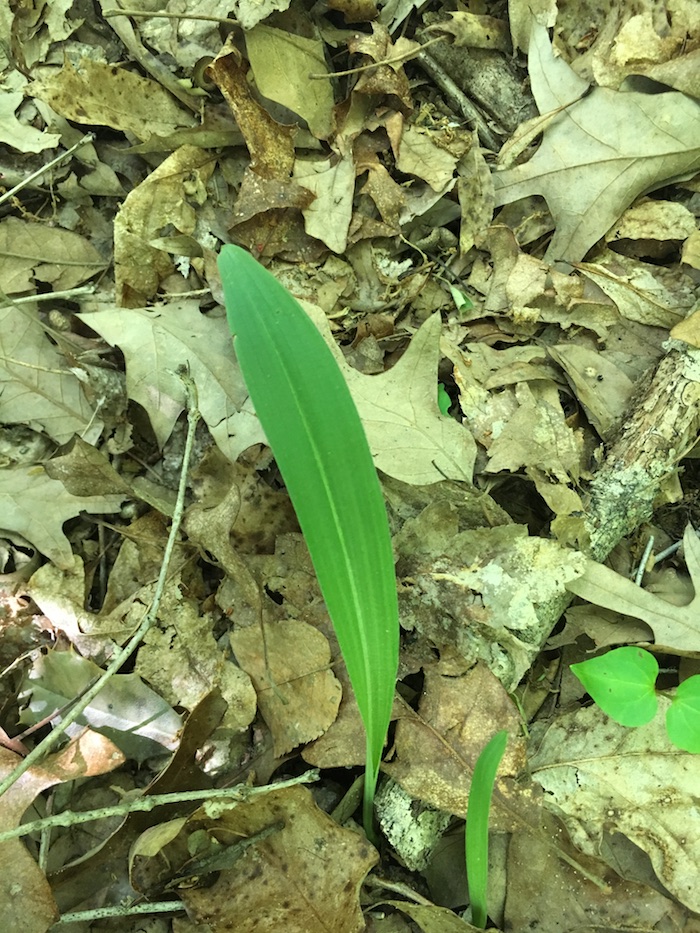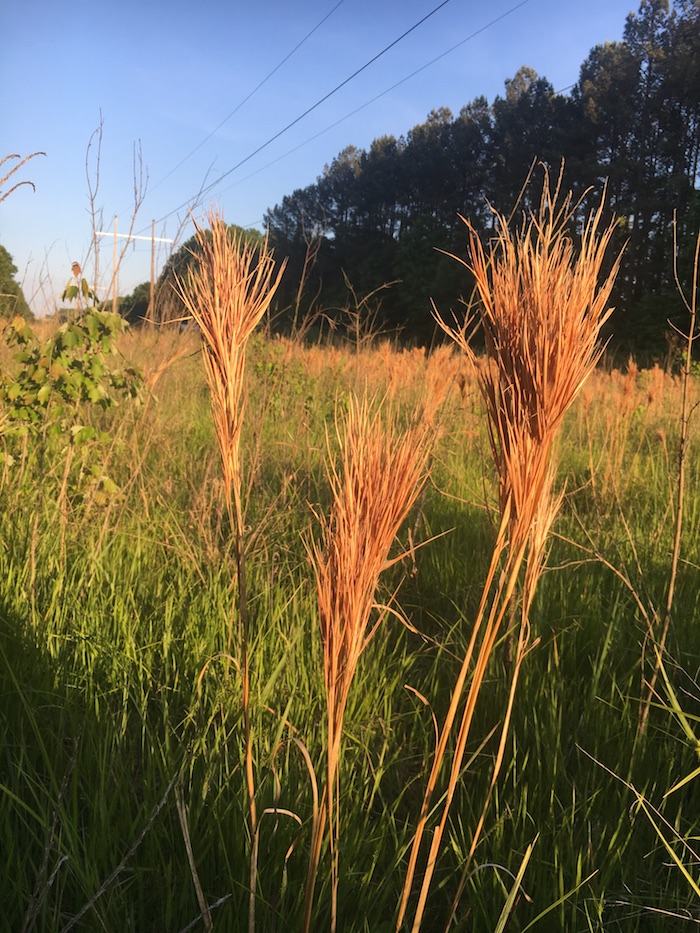By Theo Witsell, Chief Ecologist and Co-founder of SGI
Far above the bottoms of the river gorges, the flat to gently rolling surface of the Cumberland Plateau has grasslands all its own, though they are hard to come by today. Once common and widespread, these formerly open pine and oak savannas, prairies, glades, and acidic open wetlands have largely disappeared, and with them many of the species they supported. While many of these grasslands have been converted to pastures, pine plantations, or other human uses, others have been lost to encroaching forests in the absence of periodic natural disturbances like fire and the grazing and browsing of large native herbivores (most recently bison and elk) that once helped to keep them open. With the cumulative impacts of these threats, much of the native biodiversity of the region is in crisis.
This decline in biodiversity is driven by the loss of the herbaceous ground flora, which is largely caused by two factors: 1) too much shade from an overly dense midstory and forest canopy, and 2) the accumulation of decades of leaf litter on the ground, which acts like mulch preventing plants from establishing. Furthermore, most of the herbaceous plants native to the habitats of the plateau surface are heliophytes (sun-lovers), requiring full to partial sun to thrive and reproduce. There are few shade tolerant herbaceous plants (those capable of thriving and flowering in shaded forests) present in these areas to begin with. Those sorts of sciophytes (shade-lovers) are the hallmarks of the mesic forests of the dissected portions of the plateau, and are typically restricted to steep ravines, north- and east-facing slopes (especially below blufflines), and along forested streams.
The Powerlines for Pollinators project
But these sun-loving plant species, and some of the animals that depend on them, aren’t gone from the Plateau entirely. We have long known that some of them have hung on in pockets of infrequently mowed open habitats such as native hay meadows, rural roadsides, and utility rights-of-way (ROWs) (FIG 1 banner photo above). It’s the importance of this last type of area, and electric powerline ROWs in particular, that led to this collaborative project between SGI and partners at the Electric Power Research Institute (EPRI), the Tennessee Valley Authority (TVA), and the Mississippi Entomological Museum at Mississippi State University. Funded by the TVA, this study will help quantify the importance of open transmission powerline ROWs in sustaining both insect/pollinator biodiversity and the plant diversity on which they depend.
It consists of a series of paired plots, one set situated in the open ROW and the other set 200 meters off the ROW in adjacent wooded habitat. SGI Research Associate Darrell Brandon and I are the SGI leads on the project, and are working closely with EPRI biologist Ashley Bennett and TVA botanist Adam Dattilo, with field assistance from SGI Research Associate Zach Irick, and Executive Director Dwayne Estes. A team of entomologists from the Mississippi State Entomological Museum led by JoVonn Hill are the leads on the pollinator field work.
In mid-May I picked up Darrell, who is the lead field botanist on the project, in Memphis and we headed east down I-40 to meet Dwayne and Adam at a remote powerline ROW in the Mount Roosevelt Wildlife Management Area southeast of Crossville in Cumberland County. After walking a mile and a half up and down a section of the ROW we decided on our first plot location and got to work. The ROW was situated in rolling upland terrain and was rich in grassland plants, dominated by Little Bluestem (Schizachyrium scoparium, a common grass of dry prairies and savannas) and Small’s Ragwort (Packera anonyma, a common forb of open ground on the Plateau). It also had some nice-to-find indicators of good quality grassland habitat like Indian Paintbrush (Castilleja coccinea), Dwarf Prairie Willow (Salix humilis var. tristis), Goat’s Rue (Tephrosia virginiana), Wild Quinine (Parthenium integrifolium, White Colicroot (Aletris farinosa), and Yellow-fringed Orchid (Platanthera ciliaris) (FIG 2). This was definitely a remnant of the ground flora of the open savannas that were once common on the Plateau and it was typical of the other upland ROW plots we sampled (FIG 3).
FIG 1. Left to right: Indian Paintbrush (Castilleja coccinea), Dwarf Prairie Willow (Salix humilis var. tristis), and Wild Quinine (Parthenium integrifolium) are indicators of grassland remnants in powerline rights-of-way on the surface of the Cumberland Plateau. Photos by Dwayne Estes (left), Theo Witsell (center), and Joey Shaw (right).
Clues of the potential for savanna response to management
The adjacent forested plots, however, were dramatically different (FIG 3). There were few herbaceous plants on the ground, and essentially none flowering. This means little nectar resource for pollinating insects, little fruit or seed resources for wildlife, and little production of future generations of plants. The little ground flora present was dominated by shade-suppressed woody plants – species like Poison Ivy (Toxicodendron radicans), Virginia Creeper (Parthenocissus quinquefolia), Muscadine (Vitis rotundifolia), seedlings of Red Maple (Acer rubrum), and a few other species, but again, few if any of them flowering or producing fruit.
FIG 3. Left: Plot photopoint in a powerline right-of-way on the surface of the Cumberland Plateau in Bledsoe County, Tennessee with Small’s Ragwort (Packera anonyma) and Hairy Phlox (Phlox amoena). Photo by Theo Witsell. Right: Plot photopoint in a shaded forest adjacent to the right-of-way plot in Fig. 11. Note the dense shade, heavy mulch-like leaf litter, and lack of herbaceous ground flora. Photo by Theo Witsell.
Yet still, if you hunted hard enough you might find a few of the old sun-loving plants hanging on. In one plot we found single non-flowering plants (in some cases single leaves!) of several remnant sun-lovers: Wild Quinine (Parthenium integrifolium), Yellow-fringed Orchid (Platanthera ciliaris), and Greater Tickseed (Coreopsis major) (FIG 4). Their presence tells of both the site’s grassland heritage and its potential to respond to management that would restore it back to open savanna. Even plants that can tolerate some shade and that were present in the forest, like the Pink Lady’s-slipper Orchid (Cypripedium acaule, FIG 5), were more robust and had more flowers at the edge of the ROW where they were getting more sunlight. Anyone can see that the ROW plots are more biologically diverse than the forested ones, but this study will allow us to quantify by how much and in what ways.
FIG 4. left to right: Shade suppressed plants of Wild Quinine (Parthenium integrifolium), Yellow-fringed Orchid (Platanthera ciliaris), and Greater Tickseed (Coreopsis major) barely hanging on in closed-canopy low diversity forest on the surface of the Cumberland Plateau. Photos by Theo Witsell.
FIG 5. Flowering specimen of Pink Lady’s-Slipper (Cypripedium acaule) at the edge of a right-of-way. Photo by Theo Witsell.
The “rare plant yell”
One of the most interesting sites we visited was a wide, wet, grassy flat in an open ROW saturated by groundwater seepage in Van Buren County, Tennessee. Even from a distance, we could see scattered plants of Bushy Bluestem (Andropogon glomeratus, FIG 6), a conspicuous indicator of wet savanna. This was a known site for the White Fringeless Orchid (Plantanthera integrilabia), federally listed Threatened and state listed Endangered in Tennessee. I had never seen it in the wild and it was high on my list of species to find, even though it wouldn’t flower until mid-summer. Adam and I stopped there late one evening to lay out our plot and after a little hunting we saw last year’s fruiting stalks and this year’s leaves.
We laid out the plot and as I was taking photopoint pictures, I heard Adam give his customized version of the familiar “rare plant yell”. I went to see what he’d found and was thrilled to see him standing among a previously unknown population of another very rare orchid for Tennessee, the Rose Pogonia (Pogonia ophioglossoides, listed Endangered in Tennessee,). It was growing on elevated mounds of Peat Moss (Sphagnum sp.) around the base of some Alder shrubs. It was in bud, about a week off from flowering, but was later photographed in bloom by JoVonn when he arrived at the site for his pollinator work (FIG 7). It was growing with a few other uncommon to rare species including Bog Rosette-grass (Dichanthelium lucidum) and Fen Rush (Juncus subcaudatus).
FIG 6. left: Bushy Bluestem (Andropogon glomeratus), a conspicuous indicator of wet savannas, in a high-quality open seepage wetland in a powerline right-of-way in Van Buren County, Tennessee. Photo by Theo Witsell.
FIG 7. right: Rose Pogonia (Pogonia ophioglossoides), one of the rarest orchids in the state, in a high-quality open seepage wetland in a powerline right-of-way in Van Buren County, Tennessee. Photo by JoVonn Hill.
Rare plants love rare habitats
The next morning, I returned to the site with Darrell and volunteer Megon Stepaniuk, a graduate student working with SGI Research Associate Joey Shaw at the University of Tennessee at Chattanooga, and also doing research on the flora of powerline ROWs in the Cumberland Plateau. We did our plot work and found a robust population of the rare Bog Oat-grass (Danthonia epilis, state concern in Tennessee), as well as a few plants of Bigtooth Aspen (Populus grandidentata), another uncommon species at the southern tip of its range in Tennessee, growing along the edge of the ROW.
There is an old maxim that “rare plants love rare habitats” and this site proved it once again when two weeks later Dwayne used the site as a stop on a multi-agency field tour of Cumberland Plateau grassland remnants and found Early St. John’s Wort (Hypericum nudiflorum, state concern in Tennessee, FIG 8), raising the rare plant total for the site even higher.
We will continue to monitor the 2019 plots this year and will add more plots to this study in 2020 and 2021. We are taking photos of many species and posting them to the iNaturalist project SGI: Cumberland Plateau Powerline Grasslands.
FIG 8. Early St. John’s Wort (Hypericum nudiflorum), listed as a species of state conservation concern, in a high-quality open seepage wetland in a powerline right-of-way in Van Buren County, Tennessee. Photo by Dwayne Estes.
FIG 1. Banner photo: A powerline right-of-way on the surface of the Cumberland Plateau in Bledsoe County, Tennessee with conspicuous flowering stands of Small’s Ragwort (Packera anonyma) and many other species. Photo by Theo Witsell.













